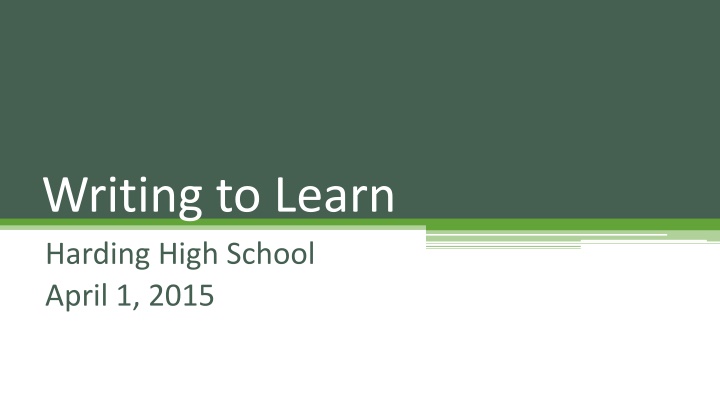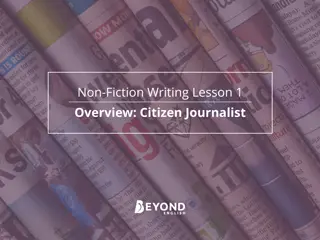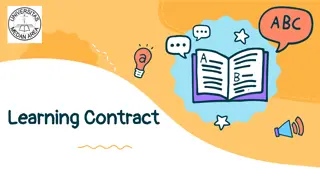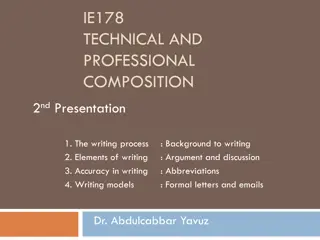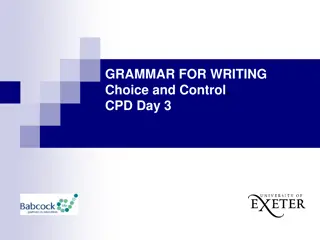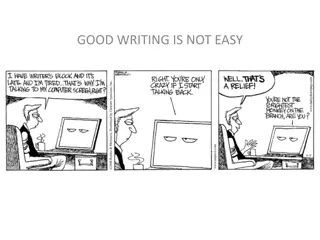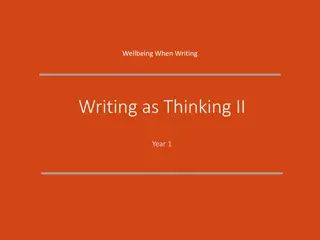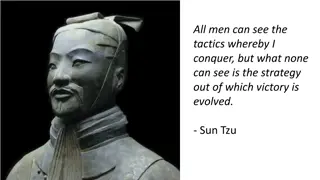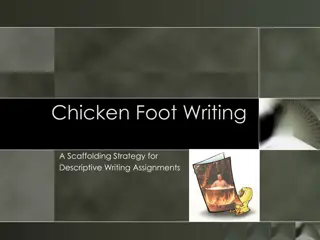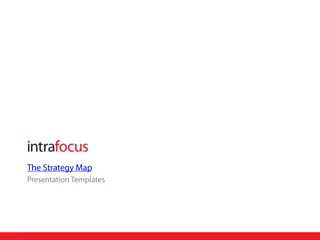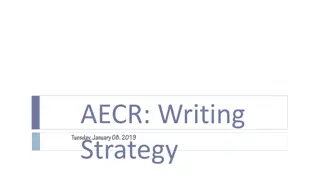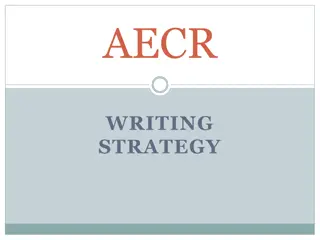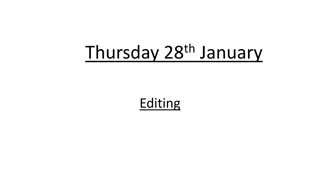Enhancing Learning with Writing to Learn Strategy
Utilizing the Writing to Learn (WTL) strategy in classrooms promotes student engagement and deepens understanding through low-stakes writing tasks. This approach helps students internalize content, improve writing skills, and assess their understanding while enhancing memory retention and thought organization. Incorporating WTL as a personal tool empowers students to explore their knowledge and problem-solving abilities, ultimately fostering a student-centered learning environment.
Download Presentation

Please find below an Image/Link to download the presentation.
The content on the website is provided AS IS for your information and personal use only. It may not be sold, licensed, or shared on other websites without obtaining consent from the author.If you encounter any issues during the download, it is possible that the publisher has removed the file from their server.
You are allowed to download the files provided on this website for personal or commercial use, subject to the condition that they are used lawfully. All files are the property of their respective owners.
The content on the website is provided AS IS for your information and personal use only. It may not be sold, licensed, or shared on other websites without obtaining consent from the author.
E N D
Presentation Transcript
Writing to Learn Harding High School April 1, 2015
Objectives Explain the Writing to Learn (WTL) strategy. Understand the impact of WTL in the classroom. Discuss the WTL and its role in student engagement and mindset change. Introduce eight WTL strategies.
Why Use Writing to Learn? Writing to Learn, an anchor strategy, uses low-stakes writing tasks as a way to push students to develop ideas and expand understanding. Writing to Learn helps students internalize their understanding of content. With the anchor strategy, students use writing as a tool for thinking and learning. The learning becomes student centered.
The Value of Writing Remembering: Students remember information better when they produce something in writing about it. Deepening Thought Process: Through writing, students clarify and organize their thoughts Assessing Understanding: WTL gives the teacher a snapshot of each student s understanding. Improving writing: WTL helps students become better writers by developing their voice and viewpoint on a routine basis.
Low-Stakes Writing Low stakes writing is daily and is used in multiple classrooms. Teachers do not grade the grammar or spelling. Low stakes writing is short as little as two minutes or as long as about eight minutes Jot down three adjectives that describe how the story made you feel. List two things that cause evaporation. Summarize the steps to solve a problem.
Writing to Learnand the Six Instructional Strategies Writing to Learn and student engagement uses other Common Instructional strategies: Writing prepares students for Literacy Groups or Collaborative Group Work Writing transitions to Classroom Talk and Questioning Writing accesses prior knowledge as a form of Scaffolding
Writing to Learn is a personal tool that students use to figure out what they already know and what they would like to know. With writing, students engage with the text or in problem solving.
Initiating Writing to Learn Are you yourself comfortable with writing? How do you already use writing in your classroom? Stop and write down your thoughts. Share with another person.
Getting Started Use low-stakes student writing routinely as part of your lesson plan. A good starting point is to have students write about something that is concrete a picture, an object, a chart, a table, a map, or a short quote.
Tips for Getting Started Use Writing to Learn as an opening activity. Use daily or routinely. Keep it nonthreatening. Keep it brief. Make sure everyone writes something even two or three words! Use it as an ending activity.
Eight Writing to Learn Strategies 10-2-2 or Chunk and Chew 3-2-1 Protocol Collaborative Annotation Record, Reduce, Reflect Write, Pair, Share Concept Sketches Write My Own Word Problem Times Three
10-2-2 (Chunk and Chew) This protocol uses presentation of material for 10 minutes, writing for understanding for two minutes, and sharing for two minutes.
3-2-1 Protocol The 3-2-1 is a student-centered summarization activity. Students write down three things they learned, two things that were noteworthy, and one questions they still have. Used as a written learning review or an exit ticket.
Collaborative Annotation Students answer a prompt that is written at the top of the page. Students sit in groups of 2-4. Each student begins with a paper. Papers are passed around the circle for short responses from the other students until students get their original paper. Activity ends with sharing.
Record, Reduce, Reflect Students work in groups of four to read the text, write down key ideas, summarize those ideas, and reflect on the ideas in a short discussion.
Write, Pair, Share Students answer a prompt individually, talk with a partner, and then share with the class.
Concept Sketches Use this strategy when students must explain a process by selecting images that students will use as the topic s prompting materials.
Write My Own Word Problem Students create word problems based on an equation that they are given.
Times Three The mathematics-centered activity emphasizes a mathematical perspective in three forms algebraically, graphically, and numerically.
Why Use Writing to Learn Strategies? Coherence in teaching across content areas Consistent instruction Mindful teaching that is student centered
Final Thoughts on Writing to Learn Strategies Springboard for deepening student understanding of content Means of informal (and formal) assessment Entry point for high-stakes writing
